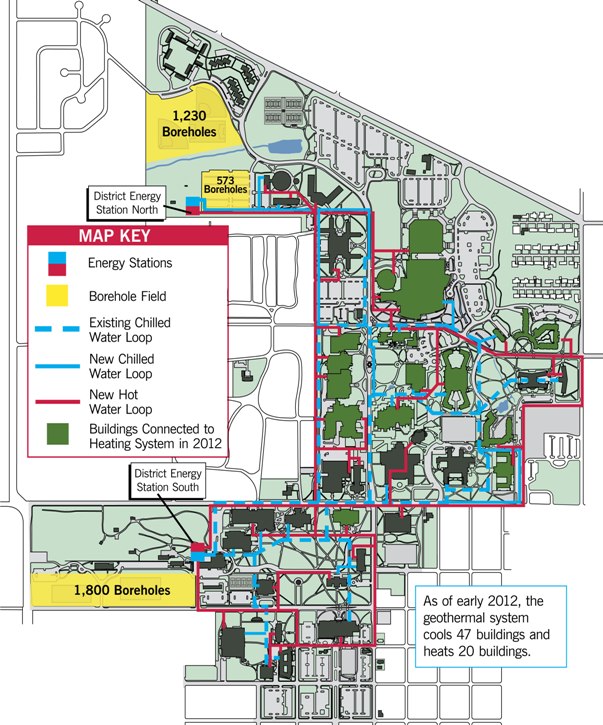Heating and cooling old college buildings can be a very expensive, and environmentally unfriendly, proposition. Ball State University in Indiana, is taking a greener tack though, resulting in the nation’s largest geothermal heating and cooling system. Built using funds from the State of Indiana, the university and a $5 million grant from the U.S. Department of Energy, the system will save the university an estimated $2 million annually in operating costs and cut the university’s carbon footprint in half.
Started in 2009, the geothermal system’s first phase is now up and running, with the second phase already underway. When complete, the ambitious system will heat and cool 47 university buildings, totaling 5.5 million square feet across the 660-acre campus.

image via Ball State University
To implement the first phase, the university drilled 1,800 boreholes around campus, each 4 to 5 inches in diameter and 400 to 500 feet deep. These holes, and the additional 1,800 needed for phase two, will be completely undercover, topped with parking lots and recreational fields. One thousand miles of piping circulates water in a closed loop system, and facilitates the heat transfer between the ground and the buildings. The separate hot and cold pipe systems eventually pass through heat exchangers and fans that blow either the hot or chilled air into the buildings.
Once complete, the new heating system will allow the university to shut off all four of its coal-fired boilers, saving 85,000 tons of carbon dioxide from entering the atmosphere annually. Funded with American Recovery and Reinvestment Act money, Ball State used almost all made-in-America components and contracted with over 50 Indiana firms to complete the project.
[source: http://feedproxy.google.com/~r/Earthtechling/~3/sFXg6KPPgFk/]

Leave a Reply
You must be logged in to post a comment.